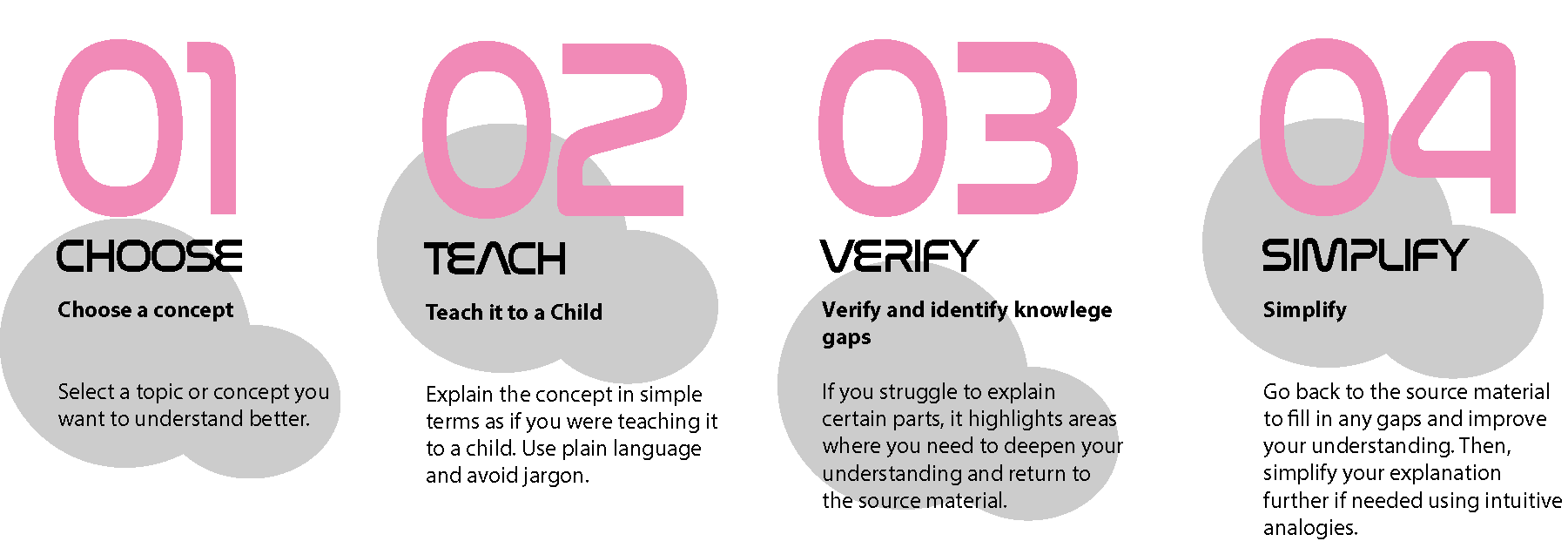For technologists and especially software engineers and engineering managers, cultivating the art of continuous learning is critical now more than ever in order to stay relevant.
This is part two of the series "Hello, Engineer - The Art of Continuous Learning"
In my recent reading1 whilst trying to understand how to approach motivating my own video-game loving mini-me(s) to develop a love of learning and critical thinking I came across the quote:
QUOTE
The illiterate of the 21st century will not be those who cannot read and write, but those who cannot learn, unlearn, and relearn. - Alvin Toffer (Herbert Gerjuoy)

That quote was summarized from a statement made more than five decades ago2 in a book written by a futurist who was concerned about the shock that the continuous pace of change would inflict on the society of our times and remains just as true now as it was when it was made. The cycle of learning, unlearning, and relearning is as relevant for engineers as it is for children learning foundational concepts for the first time as the pace of change is relentless.
Learning. Is. Never. Complete.
Case in point: just as we’re getting our heads around the various applications of AI (including those threatening to take our jobs) and its seemingly exponential pace of improvement3, quantum computing is just around the corner threatening to break everything4 it seems like the pace of change driven by technology is truly shocking.
It’s worth noting that in context the quote I mentioned earlier actually says:
QUOTE
“By instructing students how to learn, unlearn and relearn, a powerful new dimension can be added to education.” - Alvin Toffer
Then it refers to a statement made by psychologist Herbert Gerjuoy:
Quote
The new education must teach the individual how to classify and reclassify information, how to evaluate its veracity, how to change categories when necessary, how to move from the concrete to the abstract and back, how to look at problems from a new direction—how to teach himself. Tomorrow’s illiterate will not be the man who can’t read; he will be the man who has not learned how to learn.” - (Herbert Gerjuoy)
In our modern day lingua that sounds a lot like training an AI model but this time that’s not the focus here. We (humans) still and will always have a part to play - it’s about training our own mental models and teaching ourselves to learn, to unlearn or let go when our understanding about things changes supported by new facts, and relearning when the situation calls for it.
Learning How to Learn
In a previous post I covered some of the science of learning how to learn; including adopting the growth mindset characterized by positive views of challenges, obstacles, effort, criticism, and learning from the successes of others. We also covered some learning strategies such as spaced repetition, active recall, and interleaved practice and the role books can play even today when there’s competition with bite-sized courses, web articles, and online videos.
Fundamentally, though, continuous learning is about agility - learning agility5 - our ability to adapt to our continuously changing environment. It’s about recognizing that it’s not about what you know now, but rather how quickly you can adapt, learn, and apply new knowledge in ever-changing environments. It’s no secret that the best engineers, managers, coaches, and teachers think for themselves, embrace challenges, and love learning. I’d argue that the that last piece - love of learning6 - is key to the “continuous” part of the art.
Love Learning - Playing the Game
Embrace the learning game—it’s about embracing challenges, seeking knowledge, and enjoying the process of becoming better versions of ourselves.
Similar to those who enjoy sports and video games, there’s an inherent enjoyment in the process of mastering new skills and techniques.
In sports, athletes find fulfillment in refining their techniques, understanding opponents’ tactics, and enhancing their performance over time. Whether it’s perfecting a jump shot in basketball or mastering a volley in football (soccer), the joy lies in the journey of constant growth and development.
In video games, players love the challenge of progressing through levels, learning from failures, and ultimately achieving mastery. Each defeat serves as a lesson, motivating players to keep adapting their approach and trying and trying again7, fostering a continuous cycle of learning and improvement.
A love of learning, of metacognition8, of playing the learning game, has a direct relationship with self-motivation, indicates whether you will run from new challenges or rather embrace them, and enables you to act wisely and quickly in both familiar and unfamiliar situations.
The Feynman Technique
Quote
You don’t become a master because you’re able to retain knowledge. You become a master when you’re able to release it. - The Diary of a CEO
The Feynman Technique9 is so popular as a skill for mastering the art of learning as it encourages the learner to refine their understanding by teaching. In doing so they add some necessary desirable difficulty10 to their learning process and introduces a feedback loop of critique which can further enhance our understanding.
The concept defines four simple steps for anyone11 wishing to learning anything:
-
Choose a concept: Select a topic or concept you want to understand better.
-
Teach it to a child: Explain the concept in simple terms as if you were teaching it to a child. Use plain language and avoid jargon.
-
Verify and identify knowledge gaps: If you struggle to explain certain parts, it highlights areas where you need to deepen your understanding and return to the source material.
-
Simplify: Go back to the source material to fill in any gaps and improve your understanding. Then, simplify your explanation further if needed using intuitive analogies.

The reason this technique works so well because it forces you to confront your understanding of a topic by breaking it down into its basic components and explaining it in simple terms. Teaching the concept to someone else, even if they’re just an imaginary accomplice, helps solidify your understanding and reveals any areas where you may be unclear. Revisiting the material and simplifying your explanation further enhances your comprehension and retention, and helps to keep your understanding evergreen. What’s more, in a primarily digital world, the technique helps to avoid getting into the trap of thinking we’re learning when we’re really just copying and pasting or transcribing (see also Hello, Engineer - Why Keep an Engineering Journal).
Continuous learning is a continuous cycle of adaptation and growth. As the world evolves at an unprecedented pace, our ability to learn, unlearn, and relearn becomes paramount for confidence in your craft, upward mobility, and standing out.
Embracing challenges, fostering a love for learning, and employing effective strategies are key components of this journey. Just as athletes refine their skills and gamers conquer new levels, individuals can cultivate their own mastery through dedication and resilience. By adopting a growth mindset and utilizing techniques like the Feynman Technique (learning by teaching) or even learning in public, anyone can navigate the complexities of the modern world with confidence. In essence, the pursuit of knowledge is not just about acquiring facts, but about embracing the process of becoming better versions of ourselves, one lesson at a time.
Disclaimer:
The views and opinions expressed in this blog are based on my personal experiences and knowledge acquired throughout my career. They do not necessarily reflect the views of or experiences at my current or past employers
Next Steps
- Share your own favorite learning resources or book recommendations.
- Follow my blog (and others) for future updates on my engineering exploits and professional / personal development tips.
- Connect on social media channels.
Footnotes
-
Fábrega, Ana Lorena. The Learning Game: Teaching Kids to Think for Themselves, Embrace Challenge, and Love Learning. Petersfield, Hampshire, Great Britain: Harriman House, 2023. ↩
-
Toffler, Alvin. Future Shock: By Alvin Toffler. Bantam Books, 1970. ↩
-
Sam Altman: OpenAI, GPT-5, Sora, Board Saga, Elon Musk, Ilya, Power & AGI | Lex Fridman Podcast Ep. 419, 2024. https://www.youtube.com/watch?v=jvqFAi7vkBc. ↩
-
“Quantum Safe | IBM Quantum Computing.” Accessed June 3, 2024. https://ibm.com/quantum/quantum-safe. ↩
-
IESE Insight. “Why We Need Limitless Learning When the World Knows No Limits.” Accessed June 3, 2024. https://www.iese.edu/insight/articles/limitless-learning-world-knows-no-limits/. ↩
-
Author’s Note: I know for sure where my love of learning came from: My mother. Amongst many other things she held roles as a teacher: of English, of language, of culinary arts. Even now she continues to learn at a pace I can’t match, as evidenced by her 904 day DuoLingo streak and 761901 XP learning Chinese vs my recovering 87 day streak and 60482 XP learning Spanish! Learning is burnt into my psyche as much as my love for sports. No surprise, then, that I married a science teacher - specifically of Biology/Biochemistry - which is one subject I didn’t really love. ↩
-
Rober, Mark. “Mark Rober: The Super Mario Effect: Tricking Your Brain into Learning More | Mark Rober | TEDxPenn | TED Talk.” Accessed June 3, 2024. https://www.ted.com/talks/mark_rober_the_super_mario_effect_tricking_your_brain_into_learning_more/transcript. ↩
-
MIT “Metacognition | Teaching + Learning Lab.” Available: https://tll.mit.edu/teaching-resources/how-people-learn/metacognition/. Accessed: Jun. 03, 2024. ↩
-
Todoist Inspiration Hub. “The Feynman Technique: How to Learn Anything Quickly.” Accessed June 3, 2024. https://todoist.com/inspiration/feynman-technique. ↩
-
Bjork, Robert A. “Memory and Metamemory Considerations in the Training of Human Beings.” In Metacognition, edited by Janet Metcalfe and Arthur P. Shimamura, 185–206. The MIT Press, 1994. https://doi.org/10.7551/mitpress/4561.003.0011. ↩
-
Richard Feynman, Thinking Part 1 of 2, 2009. https://www.youtube.com/watch?v=lr8sVailoLw. ↩